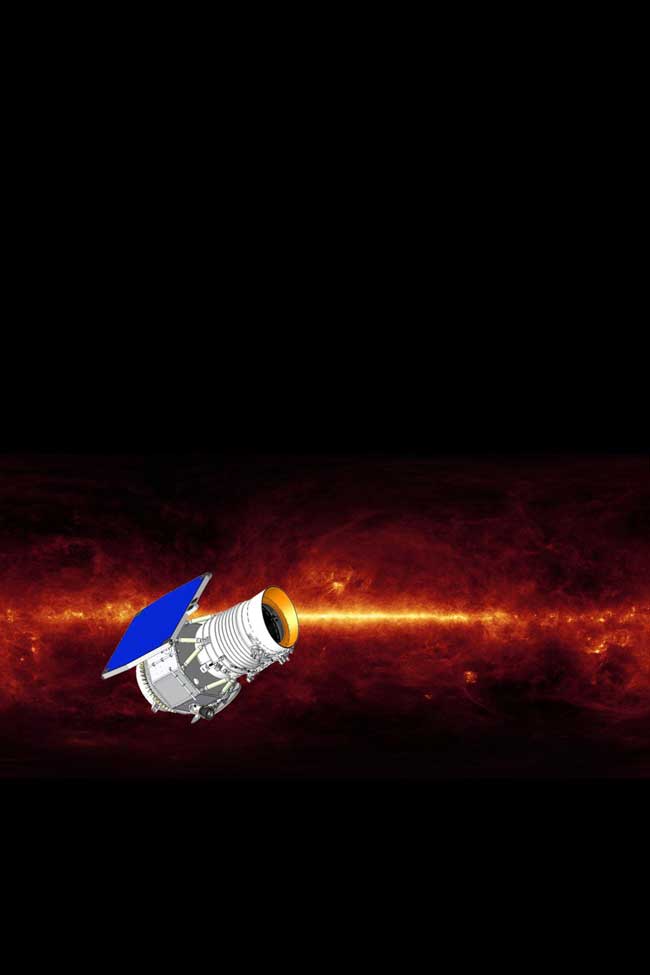
NASA will reactivate an asteroid-hunting spacecraft next month to help identify potentially dangerous space rocks and flag candidates for the agency's ambitious asteroid-retrieval mission, officials announced Wednesday (Aug. 21).
The Wide-field Infrared Survey Explorer, or WISE, will be awakened from hibernation in September to conduct a three-year search for near-Earth objects (NEOs). The probe is expected to discover 150 new asteroids and characterize about 2,000 others, NASA officials said.
WISE's new work could help the agency pick a target for its "Asteroid Initiative," a bold plan to drag a small space rock to a stable orbit near the moon. Once there, the asteroid could be visited by astronauts using NASA's Space Launch System rocket and Orion capsule, perhaps as soon as 2021. [NASA's Asteroid-Capture Mission in Pictures]
The Asteroid Initiative, which was unveiled in April, represents one way of fulfilling President Barack Obama's 2010 directive to send people to a near-Earth space rock by 2025. (The president further requested that astronauts get to the vicinity of Mars by the mid-2030s.)
The $320 million WISE space telescope mission launched in December 2009 on a 10-month prime mission to map the entire sky in infrared light. The spacecraft took more than 2.7 million images and catalogued about 560 million celestial objects, ranging from faraway galaxies to asteroids and comets in our own solar system, NASA officials said.
In October 2010, WISE ran out of the hydrogen coolant needed to chill its four infrared detectors. But NASA extended the asteroid-hunting portion of its mission, known as NEOWISE, for four more months, since the Earth-orbiting satellite could still use two detectors to spot relatively nearby objects.
The NEOWISE project ended up discovering a total of 21 new comets, more than 34,000 new asteroids in the main belt between Mars and Jupiter and 135 near-Earth space rocks, NASA officials said.
Get the Space.com Newsletter
Breaking space news, the latest updates on rocket launches, skywatching events and more!
The spacecraft was shut down in February 2011 but remained in good working order. Mission officials are confident WISE will be ready to make its comeback next month.
"The team is ready, and after a quick checkout, we're going to hit the ground running," NEOWISE principal investigator Amy Mainzer, of NASA's Jet Propulsion Laboratory in Pasadena, Calif., said in a statement. "NEOWISE not only gives us a better understanding of the asteroids and comets we study directly, but it will help us refine our concepts and mission operation plans for future, space-based near-Earth object cataloging missions."
Follow Mike Wall on Twitter @michaeldwall and Google+. Follow us @Spacedotcom, Facebook or Google+. Originally published on SPACE.com.
Join our Space Forums to keep talking space on the latest missions, night sky and more! And if you have a news tip, correction or comment, let us know at: community@space.com.

Michael Wall is a Senior Space Writer with Space.com and joined the team in 2010. He primarily covers exoplanets, spaceflight and military space, but has been known to dabble in the space art beat. His book about the search for alien life, "Out There," was published on Nov. 13, 2018. Before becoming a science writer, Michael worked as a herpetologist and wildlife biologist. He has a Ph.D. in evolutionary biology from the University of Sydney, Australia, a bachelor's degree from the University of Arizona, and a graduate certificate in science writing from the University of California, Santa Cruz. To find out what his latest project is, you can follow Michael on Twitter.









